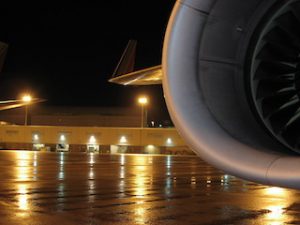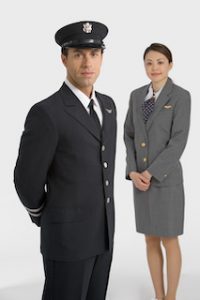Comprehensive Guide To Line Oriented Flight Training (LOFT)
 Line Oriented Flight Training is a cornerstone of modern aviation training programs. This advanced training technique is designed to simulate real-world flight operations, helping pilots develop and refine their skills in a controlled environment that mimics actual flight scenarios. In this comprehensive guide, we will delve into the intricacies of LOFT, its benefits, implementation strategies, and how it enhances overall flight safety and operational efficiency.
Line Oriented Flight Training is a cornerstone of modern aviation training programs. This advanced training technique is designed to simulate real-world flight operations, helping pilots develop and refine their skills in a controlled environment that mimics actual flight scenarios. In this comprehensive guide, we will delve into the intricacies of LOFT, its benefits, implementation strategies, and how it enhances overall flight safety and operational efficiency.
What is Line Oriented Flight Training (LOFT)?
Typically using a flight simulator, Line Oriented Flight Training is an advanced training method that involves simulating actual flight operations in a controlled environment. Unlike traditional training methods that focus primarily on specific procedures or manoeuvres, LOFT aims to replicate the complexity and dynamic nature of real-world flights.
Key components of LOFT
- Scenario-based training: LOFT scenarios are designed to mirror real-life flight conditions, including weather, air traffic, and in-flight emergencies. These scenarios are crafted to test and improve a pilot’s decision-making, communication, and teamwork skills.
- Full Flight Simulators (FFS): LOFT is conducted in high-fidelity flight simulators that replicate the aircraft’s cockpit environment, systems, and controls. These simulators provide a realistic experience that is crucial for effective training.
- Crew Resource Management (CRM): LOFT emphasises the importance of CRM, which involves managing resources such as personnel, equipment, and information to ensure safe and efficient flight operations. CRM skills are crucial for effective teamwork and decision-making in the cockpit.
- Performance-based assessment: Pilots’ performance during LOFT sessions is evaluated based on their ability to handle the simulated scenarios, manage workload, and respond to unforeseen events.
Benefits of Line Oriented Flight Training
LOFT offers numerous advantages for pilots, airlines, and aviation safety:
- Enhanced decision-making skills: LOFT scenarios are designed to challenge pilots’ decision-making abilities under realistic conditions. By navigating complex flight situations and handling unexpected events, pilots develop critical thinking skills that are essential for real-world operations.
- Improved CRM and teamwork: Effective communication and coordination between pilots and crew members are crucial for safe flight operations. LOFT exercises focus on CRM principles, helping pilots and their crews work together more effectively and manage resources efficiently.
- Better preparedness for emergency situations: By simulating a variety of emergency scenarios, LOFT prepares pilots to handle emergencies calmly and efficiently. This training ensures that pilots are well-prepared to respond to real-life emergencies with confidence and competence.
- Realistic flight experience: LOFT provides a realistic flying experience that traditional training methods may lack. Pilots can experience a wide range of flight conditions and scenarios, enhancing their ability to adapt to different situations.
- Increased safety and risk management: LOFT helps identify and address potential safety issues before they occur in real flights. By analysing pilots’ performance and decision-making during simulations, airlines can implement safety improvements and risk management strategies.
Implementing Line Oriented Flight Training
To effectively implement LOFT, airlines and flight training organisations should consider the following steps:
- Designing realistic scenarios: Creating realistic scenarios is the foundation of effective LOFT. Scenarios should be based on actual flight operations and include variables such as weather, air traffic, and aircraft performance. Collaboration with experienced pilots and industry experts can help ensure scenarios are relevant and challenging.
- Utilising advanced simulators: Investing in high-fidelity flight simulators is essential for delivering realistic LOFT experiences. Simulators should accurately replicate the aircraft’s systems, cockpit environment, and handling characteristics to provide an authentic training experience.
- Incorporating CRM training: Integrating CRM principles into LOFT is crucial for developing effective teamwork and communication skills. Training should include exercises that emphasise leadership, conflict resolution, and resource management.
- Evaluating performance and providing feedback: Regular assessment of pilots’ performance during LOFT sessions is important for identifying strengths and areas for improvement. Constructive feedback should be provided to help pilots refine their skills and enhance their overall performance.
- Continuous improvement and adaptation: LOFT programs should be regularly reviewed and updated to reflect changes in industry standards, technology, and operational practices. Continuous improvement ensures that training remains relevant and effective.
LOFT vs. Traditional Flight Training
While LOFT and traditional flight training both play important roles in pilot development, they differ in several key aspects:
- Focus and approach: Traditional flight training often focuses on specific procedures, manoeuvres, and technical skills. LOFT, on the other hand, emphasizes the integration of these skills in a realistic operational context. LOFT aims to develop pilots’ ability to handle complex, dynamic flight situations rather than just mastering individual procedures.
- Realism and complexity: LOFT provides a higher level of realism and complexity compared to traditional training methods. By simulating real-world scenarios, LOFT helps pilots develop the ability to manage multiple variables and respond effectively to changing conditions.
- Training environment: Traditional flight training may involve in-flight training or classroom instruction, whereas LOFT is typically conducted in advanced flight simulators. The simulator environment allows for a safe and controlled setting where pilots can experience a wide range of scenarios without the risks associated with actual flights.
Future of Line Oriented Flight Training
As aviation technology and industry standards continue to evolve, LOFT will likely see further advancements and adaptations. Emerging technologies such as artificial intelligence (AI) and virtual reality (VR) may enhance the realism and effectiveness of LOFT programs.
- Integration of AI and VR: AI and VR technologies have the potential to revolutionise LOFT by providing even more immersive and realistic training experiences. AI could be used to create dynamic and adaptive scenarios, while VR could offer highly interactive and engaging simulations.
- Data-driven insights: The use of data analytics in LOFT programs can provide valuable insights into pilot performance and training effectiveness. Analysing data from simulations can help identify trends, assess training outcomes, and refine training methods.
- Customisation and personalisation: Future LOFT programs may offer more personalised training experiences tailored to individual pilots’ needs and skill levels. Customisation could enhance the effectiveness of training and ensure that pilots receive targeted support.
LOFT is an essential pilot course
Line Oriented Flight Training (LOFT) represents a significant advancement in pilot training, offering a realistic and comprehensive approach to preparing pilots for real-world flight operations. By simulating complex scenarios, emphasizing CRM principles, and utilizing advanced flight simulators, LOFT helps pilots develop essential skills for safe and efficient flying.
The benefits of LOFT, including enhanced decision-making, improved CRM, and better preparedness for emergencies, make it a valuable component of modern aviation training programs. As technology continues to evolve, LOFT is poised to adapt and improve, further enhancing its effectiveness and impact on aviation safety and performance.
For airlines, flight training organizations, and pilots, investing in LOFT is a commitment to excellence and safety in aviation. By embracing this advanced training method, the industry can continue to foster a culture of continuous improvement and innovation, ultimately contributing to safer and more efficient flight operations worldwide.










